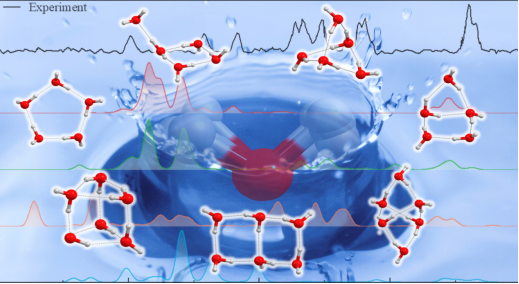Introduction:Water, though seemingly simple, holds within it endless mysteries and attracted more scientific attention than any other substance. As the source of life, accurately representing and comprehending the structure of liquid water and its hydrogen-bonding interactions continues to pose a grand challenge. In March 2025, Professor Jinggang Lan from the Faculty of Synthetic Biology at Shenzhen University of Advanced Technology, in collaboration with Professor Yan Su of Dalian University of Technology and Professor Jijun Zhao of South China Normal University, published a pioneering study inThe Journal of Physical Chemistry Letters. Through state-of-the-art quantum simulations, the team investigated the role of nuclear quantum effects (NQEs) in the structural evolution of neutral water clusters (H₂O)ₙ (n = 2–10). Their findingsredefine the benchmark at the molecular level for the “smallest drop of water”and provide a theoretical framework to explore the structure and dynamic properties of condensed-phase water.

For a long time, the water hexamer ((H₂O)₆) has been regarded as the smallest cluster capable of forming a fully three-dimensional structure. However, through high-precision quantum simulations, the research team revealed that NQEs act as an invisible driver, inducing the transition of water pentamer ((H₂O)₅) from a two-dimensional to a three-dimensional arrangement at finite temperatures. Furthermore, the study identified a novel evolutionary pathway for water hexamer with fully 3D configurations: the initial prism isomer into a book-like isomer via a cage-like intermediate—a pathway undetected in classical simulations.



Professor Lan’s team observed this previously unrecognized dynamical pathway in water cluster evolution employed many-body potential energy surfaces combined with path-integral molecular dynamics method. By calculating accurate anharmonic infrared spectra, they provided compelling evidence of the water pentamer as the smallest drop of water at finite temperatures. These findings offera molecular-scale observational window for the synergistic interplay of hydrogen-bond networks and NQEs, delivering a new theoretical insight into fundamental physical properties and dynamical behavior of aqueous systems.
The study’s co-corresponding authors are Professor Jinggang Lan (Faculty of Synthetic Biology, Shenzhen University of Advanced Technology), Professor Yan Su (Faculty of Physics, Dalian University of Technology), and Professor Jijun Zhao (Faculty of Physics, South China Normal University), with Ph.D. candidate Mengxu Li as the first author. The research was funded by the National Natural Science Foundation of China and the Fundamental Research Funds for the Central Universities.
